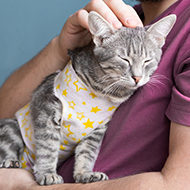BVA shares pet care advice amid UK heat warnings
Dogs are particularly at risk of overheating, and often experience heatstroke.
The British Veterinary Association (BVA) has published heatstroke advice ahead of soaring temperatures set to hit the UK this weekend.
The UK Health Security Agency (UKHSA) has issued an amber heat health alert from Friday, 27 June to Tuesday, 1 July. Temperatures will be hottest on Sunday and Monday.
The organisation warns that veterinary practices will see an increase of heat-related conditions from pets. This may include heatstroke, burnt paw pads, sun burn and breathing difficulties.
Veterinary practices are encouraged to share vital pet care advice with their clients during the hot weather.
Dogs are at particular risk of overheating, as they can not cool down easily through sweating. BVA warns that a midday walk, or being shut in a hot car, could prove fatal.
Flat-faced breeds, such as pugs, will be at greater risk due to their difficulties breathing and panting. Overweight and densely coated dogs are also at increased risk.
BVA advises that all pets have access to fresh drinking water, ventilation and shade from sunlight at all times.
Dogs should not be exercised during the heat of the day, with walks and play limited to early mornings or late evenings if the weather is appropriate. They should never be left in cars, caravans or conservatories.
The signs of heatstroke include heavy panting, drooling, restlessness, bright red or pale gums, and a lack of coordination.
Rabbits may experience drooling, salivating, lethargy, short/shallow breaths, red ears, wet nose and seizures. Their hutches should be kept out of the sunlight, regardless of the time of day.
In cases of suspected heatstroke, the animal should be taken to a cool, well-ventilated place. They should be provided with cool (not ice-cold) water and have room-temperature water poured over them.
In 2022’s record-breaking heatwave, 51 per cent of veterinary professionals saw cases of animals with heat-related illnesses. Dogs were most commonly affected.
Image © Shutterstock



 RCVS Knowledge has called on vet practices to audit their post-operative neutering outcomes.
RCVS Knowledge has called on vet practices to audit their post-operative neutering outcomes.